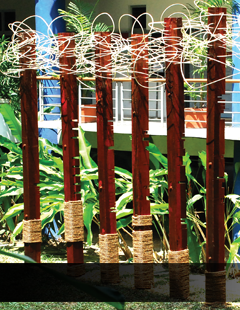
Natural Landscape Resource : An Ecological Response |
| Abd Aziz Othman & Nurhuzailin Hussain |
As one of the countries with the most biodiversity in
the world, Malaysia is composed of a variety of forest
ecosystem types which are related to one or more features
of its location, notably soil quality, aspect and elevation. These fragmented forests have received great attention recently since there is an infinite and beautiful array of natural characters in the built environment which are specific to existing and timeless processes of life. Their importance has become apparent in landscape planning and design supported by the explosion of criticism against the amenity values of landscape resources, the environmental and ecosystem functions and habitat conservation. Hence, this chapter comes into being: to address a mean by which landscape resources can be exploited to establish a more efficient and healthy landscape for human habitation and for future sustainability. It presents landscape planning, design and analysis process, with simple method and ideas for describing landscapes and their functions.
|



